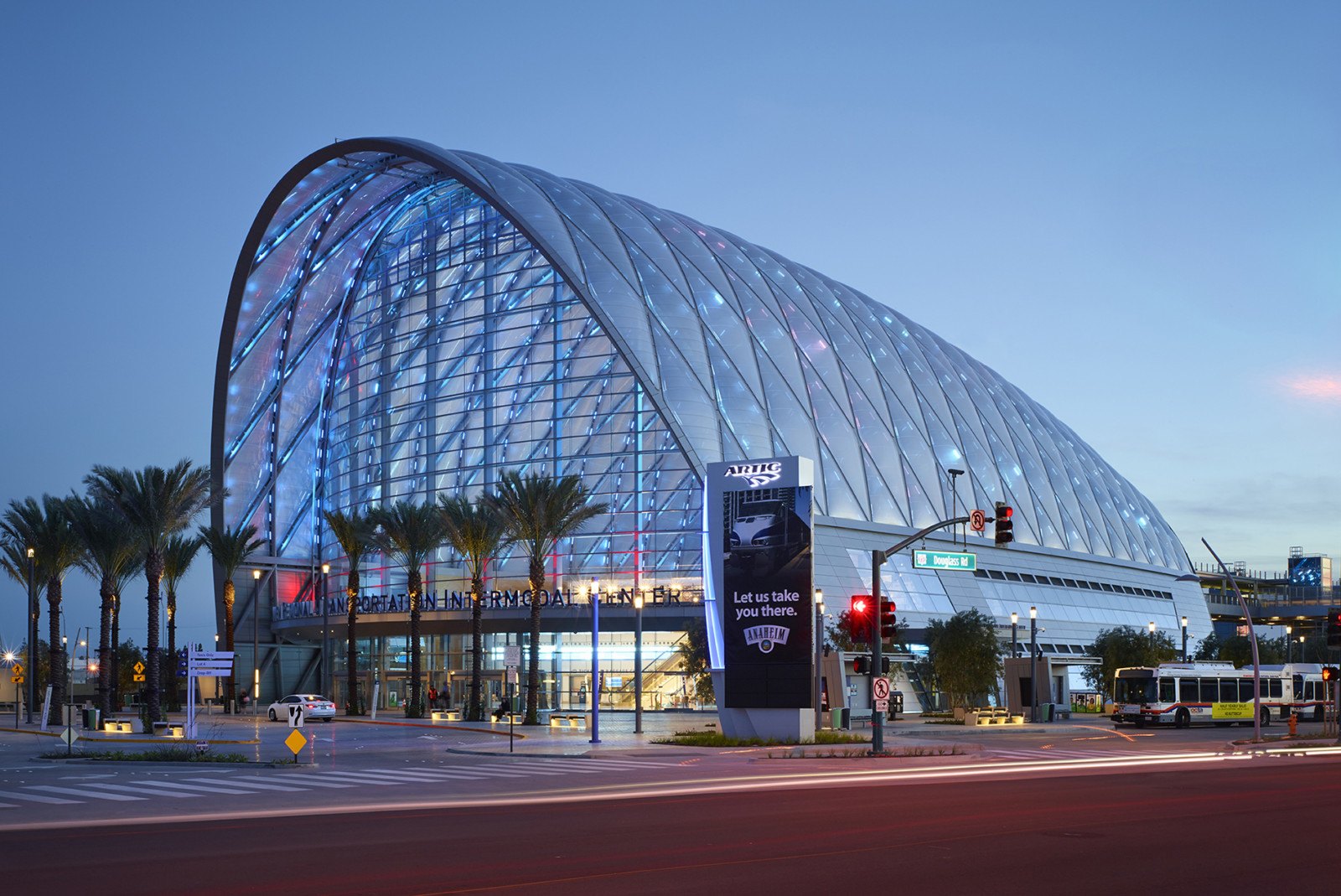At the firm’s current rate of improvement in designing for energy efficiency, Landreneau says that HOK will achieve a carbon-neutral design portfolio by 2030.
Anica Landreneau, Assoc. AIA, LEED AP, leads HOK’s sustainable design initiatives and sustainability consulting practice. In addition to her firm-wide leadership roles, Landreneau works to make her home city of Washington, D.C., one of the world’s most sustainable municipalities by contributing to green building policies, codes and implementation.
In 2006, Architecture 2030 issued the 2030 Challenge, which asked the global design and construction community to target carbon neutrality for all new buildings, developments and major renovations by 2030. To support this challenge, the American Institute of Architects created the AIA 2030 Commitment. This is a national framework with simple metrics and a standardized reporting format for tracking progress. HOK was one of the first signatories.
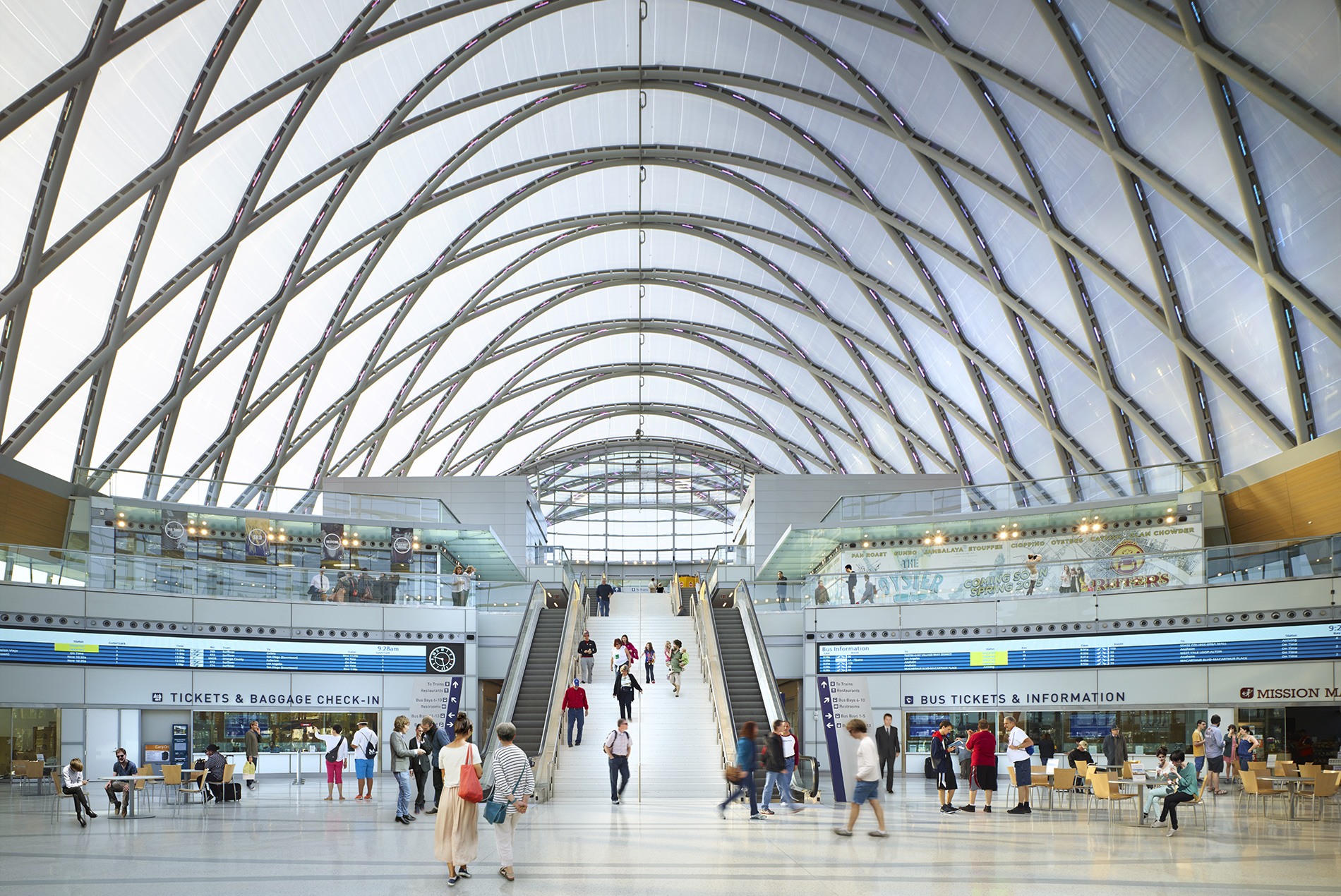
Anaheim Regional Transportation Intermodal Center in Anaheim, California
In this Q+A, Landreneau describes HOK’s progress toward meeting its AIA 2030 Commitment:
What is the AIA 2030 Commitment program?
AL: The program challenges architects to set annual energy targets for our projects and benchmark their expected performance against baselines established in the U.S. Energy Information Administration’s Commercial Building Energy Consumption Survey (CBECS) or other project type-specific databases.
Whole building design, for example, involves setting a target energy use intensity measured in kBtus per square foot per year. By looking at energy use on a square-foot basis, we can compare buildings of the same type to each other, regardless of size. For interior projects, we can look at lighting power density in terms of watts per square foot.
An office building will have a different baseline and target energy use intensity (EUI) than a more energy-intensive facility such as a hotel, hospital or lab. By using a static baseline, we can look at HOK’s annual progress toward our goal of carbon-neutral design by 2030 and compare our performance to other firms.
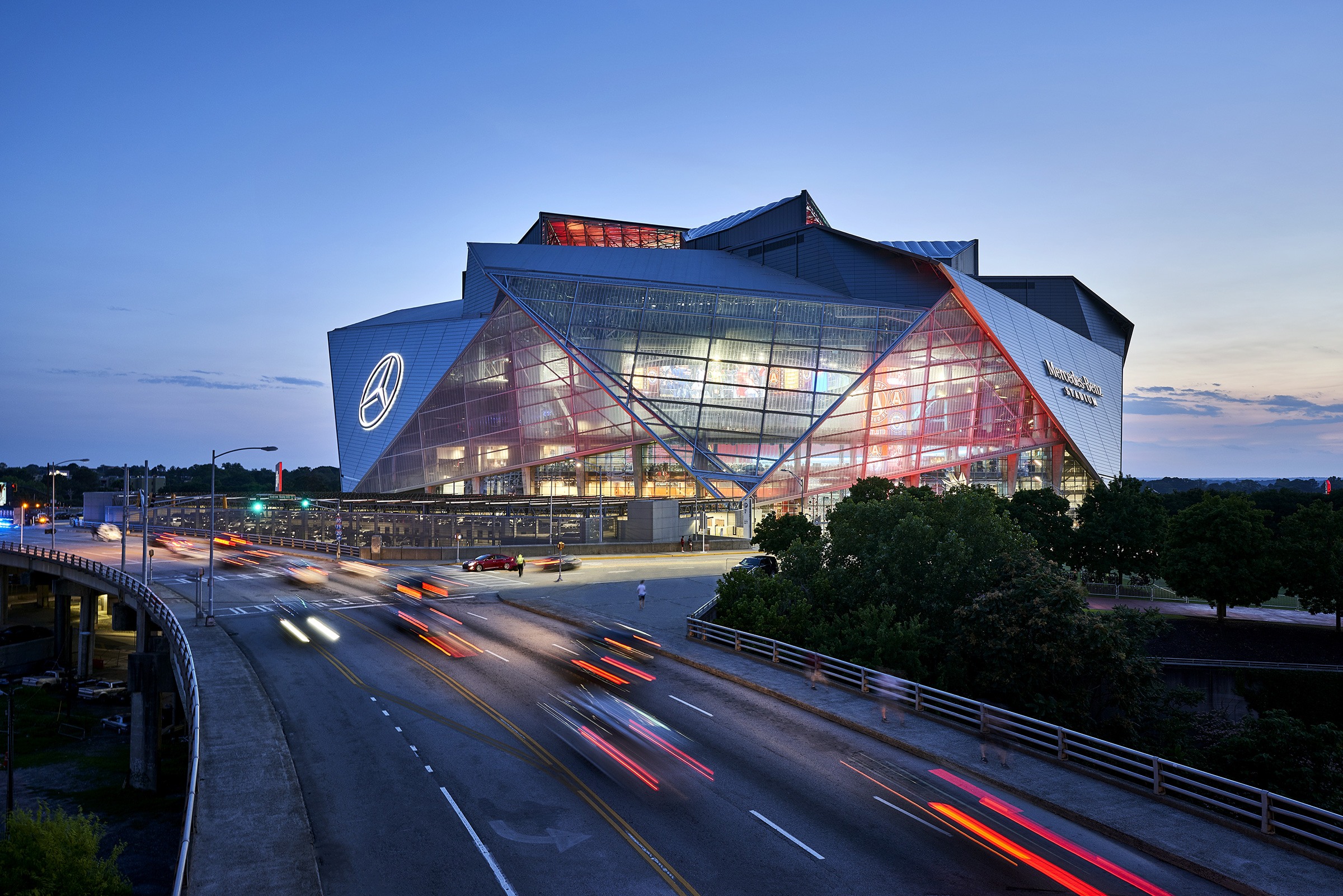
Mercedes-Benz Stadium in Atlanta
Why did the firm commit to the program?
Residential and commercial buildings are responsible for approximately 40 percent of the carbon emissions in the U.S. We have always been very cognizant of the important role architects have in creating a more sustainable future. And designing for energy efficiency brings value to our clients—it makes good business sense.
How is HOK doing?
We have tracked a firm-wide reduction of 55 percent from the CBECS baseline. Some of our newer design projects are decreasing energy use by 70 to 80 percent compared to the baseline. This balances out projects that began several years ago.
We have been improving our performance against the baseline by about five percent every year, and the target for 2017 is a 60 percent reduction in energy use intensity for our portfolio. We are on track to achieve our goal of a carbon-neutral design portfolio by 2030.
Have you experienced any obstacles?
One challenge is that we often work on complex projects such as airports, labs, hospitals and sports venues. We can’t always find a ready-made CBECS baseline. In those cases, we work with partners including the DOE, the AIA and the EPA to establish appropriate baselines and set targets.
We include all of our projects in the annual data we report to the AIA. We hope this transparency helps elevate the performance of all projects across the architectural profession.
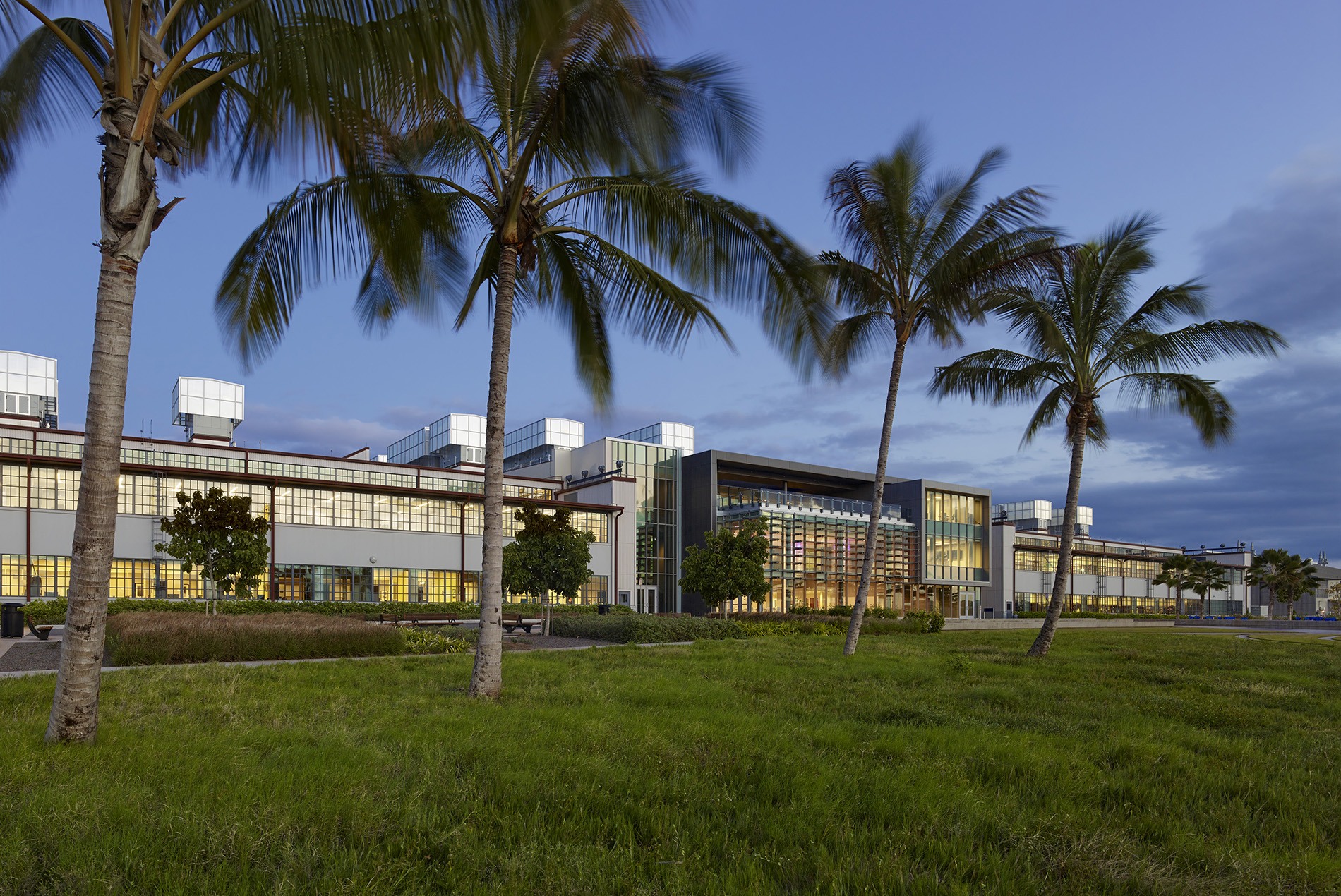
NOAA Daniel K. Inouye Regional Center in Pearl Harbor, Hawaii
How has HOK’s commitment to the 2030 Challenge affected its design processes?
The need to set energy-use targets and benchmark our modeled energy assumptions at specific project intervals has brought more rigor to our practice.
More of our designers are engaged in energy discussions with clients, engineers, contractors and consultants. And these meetings are happening much earlier in the design process. We establish the baseline and set energy targets right from the beginning. The team then continuously reviews the whole building energy model to make sure it is consistent with the design parameters.
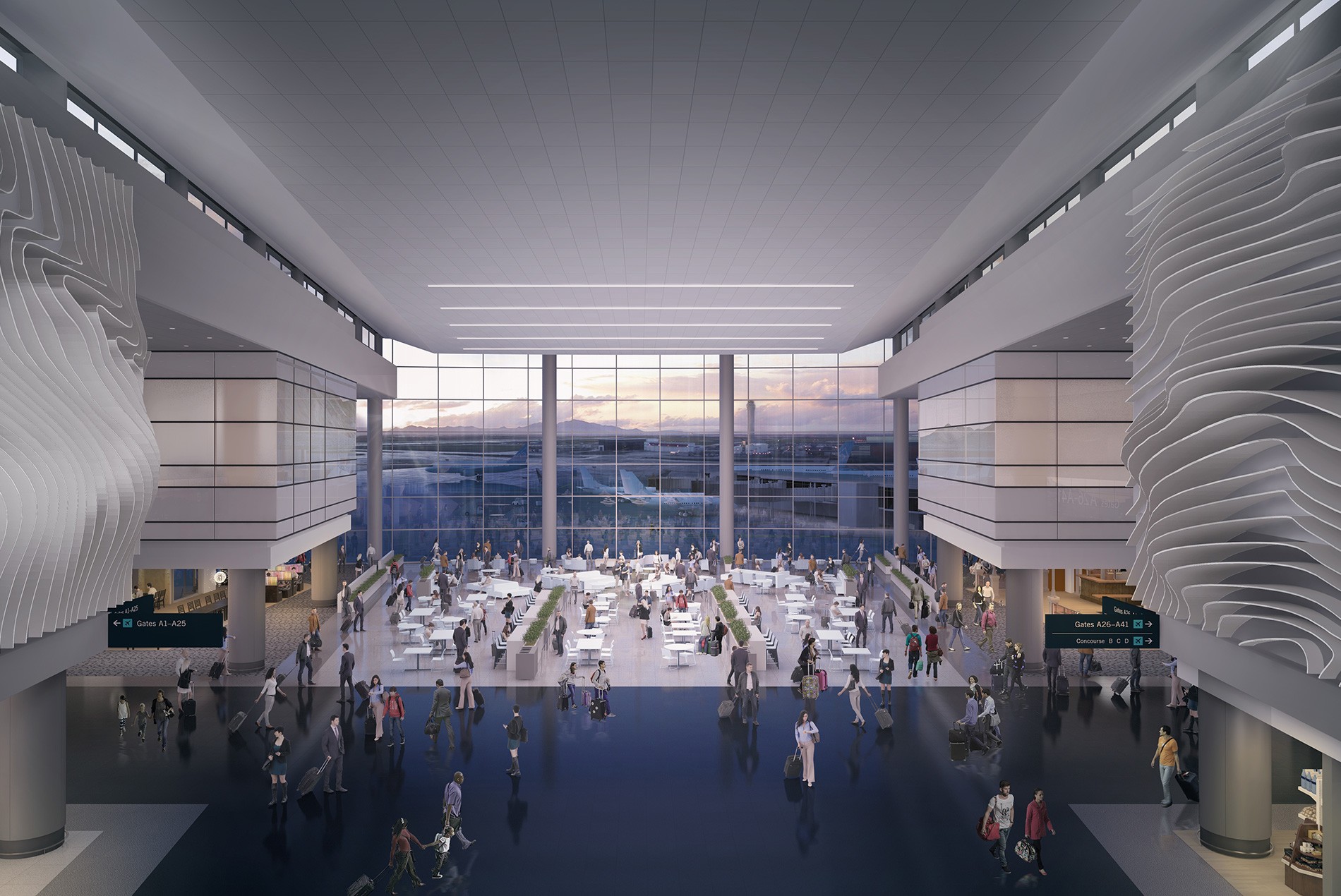
Salt Lake City International Airport Passenger Terminal
What are the benefits of this focus on energy efficiency?
Having discussions about energy efficiency earlier and more frequently in the design process has enabled us to identify significant first-cost and operational savings for our clients. For example, we can identify trade-offs between improving the building envelope and reducing mechanical loads and equipment.
The energy performance metrics enable us to have interdisciplinary discussions about what we’re doing right as well as how we can get better. Sharing best practices across the firm improves the performance of all the projects we design for our clients.
